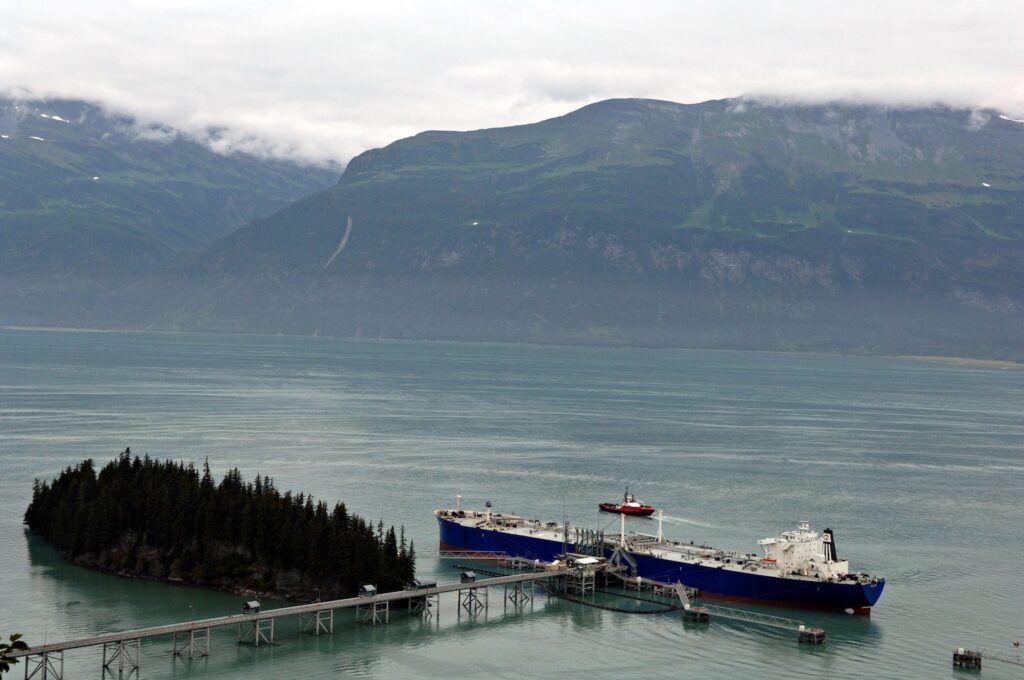
Wednesday’s news that President Joe Biden’s administration has all but given approval to a new Alaskan project, potentially injecting new life into Alaskan oil, also owes much to geopolitical angst.
ConocoPhillips’ $8 billion Willow project is expected to produce perhaps 180,000 barrels a day at its peak, equivalent to 40% of the state’s entire current oil output. The release of an environmental review offering cautious support for a scaled-back drilling plan by the Interior Department is an important milestone, though formal approval isn’t yet guaranteed.
Located on the eastern edge of the National Petroleum Reserve-Alaska — a federal naval petroleum reserve set aside a century ago — Willow has been held up by opponents denouncing its impact on the local environment and inevitable carbon emissions. The latter is an especially potent issue for President Biden, who cemented his green bona fides on day one by killing the Keystone XL pipeline.
As with his predecessor President Richard Nixon a half-century ago, though, events have intervened. Russia’s invasion of Ukraine reminded Americans that their gasoline pumps are still ultimately tethered to some unsavory regimes. It reminded Democrats that pump prices, which hit a record last summer, can be politically toxic. Biden’s unprecedented release of 180 million barrels from the Strategic Petroleum Reserve was his antidote.
If the pandemic-related collapse in energy’s share of the American wallet encouraged Biden to lean into green in 2021, the sudden appearance of an old-fashioned supply shock has forced him into a more nuanced stance. His desire for domestic oil producers to ramp up in the near term and then peace out — drill, baby, chill — is entirely in keeping with an orderly energy transition. And the project of diversifying away from fossil fuels remains vital not just to deal with emissions but to reduce dependence on the likes of Russia.
But businesses, especially those so embedded in the economy and with such long lead times as oil and gas, tend not to go so gently. Biden’s whiplash rhetoric hasn’t helped, either, with him imploring US oil producers to raise output for the quasi-war effort one minute and then denouncing them as gougers the next.
In a perfect world, the scientific consensus on climate change would have been broadly accepted decades ago and efficient economic solutions like a carbon tax put in place to shift our energy preferences. In the world we’ve got, US climate policy has lurched forward via a knife-edge vote in the Senate on subsidies and any politician hoping to force further action just by stymieing fossil-fuel production in today’s market must be sick of their job. While Willow has, similar to Keystone, become a climate cause célèbre, denying it would be a tacit gift to Russia and its OPEC+ partners; not to mention strange politics after that SPR drawdown.
There are similar tensions at the local level, where the impact of projects on the natural environment and indigenous communities’ ways of life is balanced by a desire for jobs, infrastructure and income. The Alaska Native Claims Settlement Act of 1971 codified this dynamic by giving native corporations a direct economic stake in mines, oilfields and other projects. Arctic and sub-Arctic areas are, as regional expert Heather Exner-Pirot puts it, “resource peripheries;” economically beholden to both development of those resources and shifting relationships with far-away national governments (and treasuries). While the US as a whole has suffered two years of negative growth in gross domestic product since the late 1990s, Alaska has seen 10; effectively a decade’s worth of recession in the span of one generation.
It is notable that, alongside representatives of the local Iñupiat people and regional government, Mary Peltola, Alaska’s sole representative in Congress, who is a Democrat and former tribal judge, has also endorsed Willow. In weighing that, Biden must bear in mind that Alaska is also home to large deposits of minerals critical to his US-made decarbonization effort, such as graphite, cobalt and rare earth metals. Any hopes of developing those rest on Washington’s relations with the local communities that must ultimately lend support and labor to and, in some cases, own a direct a stake in such projects. Besides Russia, the White House has reasons to give Willow the nod that are much closer to home.
More From Bloomberg Opinion:
• Drilling on Federal Land Is Oil’s Gas Stove Moment: Liam Denning
• Exxon Made Accurate Climate Forecasts Decades Ago: Mark Gongloff
• How to Win the Geoeconomics Revolution: Adrian Wooldridge
This column does not necessarily reflect the opinion of the editorial board or Bloomberg LP and its owners.
Liam Denning is a Bloomberg Opinion columnist covering energy and commodities. A former investment banker, he was editor of the Wall Street Journal’s Heard on the Street column and a reporter for the Financial Times’s Lex column.
More stories like this are available on bloomberg.com/opinion

